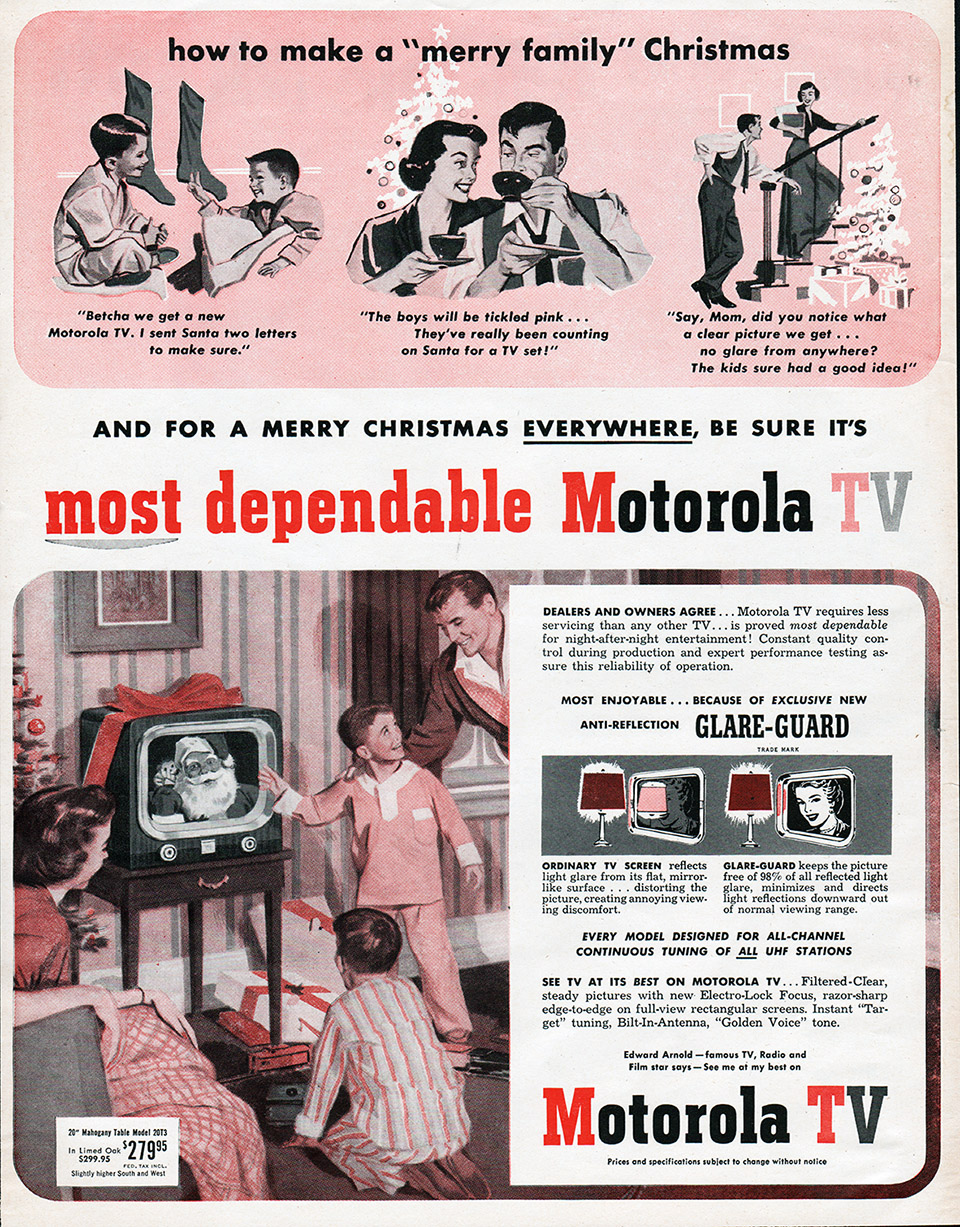
Peter Bacon Hales
Chapter Nine-- Technologies of Space and Place, 1962
Outside the Gates of Eden: The Dream of America from Hiroshima to Now

9.1 Motorola ad, 1951. This use of one-color printing was the most economical way to bring a bit of "snap" to ads-- magazines sold signatures-- collections of pages that were later folded and gathered to form parts of the magazine-- in four-color, black-and-white, and various one-color choices; red was the most common color chosen by advertisers. The practice faded away in the later '50s when four-color printing became significantly less expensive.

Radio vs. Television, 1962
Radios had lost their dominion to television by the later '50s. The industry-- meaning both the manufacturers of radios and the media companies themselves-- sought ways to continue to make radio ubiquitous in American life. The media companies ceded many of the genres to tv, to focus on a successful few: news, sports, and music particularly.
Radio manufacturers tended to move into niche areas. The arrival of the battery-powered transistor radio meant increased portability and a niche that television tried to enter with its "portable" sets, but couldn't in fact compete. This Westinghouse "Escort" model sold for 39.95 in 1962, about $329.99 today. Not cheap! But it promised to serve as something close to a woman's pocketbook, and was decorated accordingly; it combined a small, gilded ladies' watch, a flashlight, a cigarette lighter, and a relatively good-sounding radio in one.
Notice here the "feminizing" features of the ad-- but also the promise of formality, elegance, implicit in the white glove, still a feature of dressy occasions.


The alternative was to stress sonic quality and features over the manifestly inferior, tinny, low-fi sound of the television. This Zenith model from 1962, for example, featured AM and FM frequency ranges, a relative rarity in those days, when FM was largely the purview of classical music stations, a tone control, and a relatively large, full-frequency speaker.


By contrast, televisions had largely abandoned their earlier appeals to historic significance, period style, furniture-quality cabinet build, and settled on an inexpensive generic modern look, as we see in this snapshot of a family watching tv in 1962. The moves toward a hyper-modern, even futuristic look had largely lost their momentum. Philco, whose Predicta series had first gone on sale in 1958 with the slogan "This is what 1965 looks like," and who had pushed such innovations as separated viewing screens and receiver-speakers, was on the verge of bankruptcy, having lost its hail-mary bid.

Magnavox hung on to its commitment to super-high-end televisions, with high-end furniture in period styles containing big screens, stereo amplifiers, top-shelf speaker systems, stereo radios and sometimes even record changers. The prices were astronomical, too-- starting at about $4,000 and going as high as $5,500 in today's dollars.
wielo studios interactive design
interactive wielo design
eric wielo new media art
wielo
mutant colony - next nature goods
john delk - visual artist
mark miller architecture - chicago architecture
maidens brewery & pub - indiana's finest craft beer
erin feder visual art
the sight of hand by dann waters
